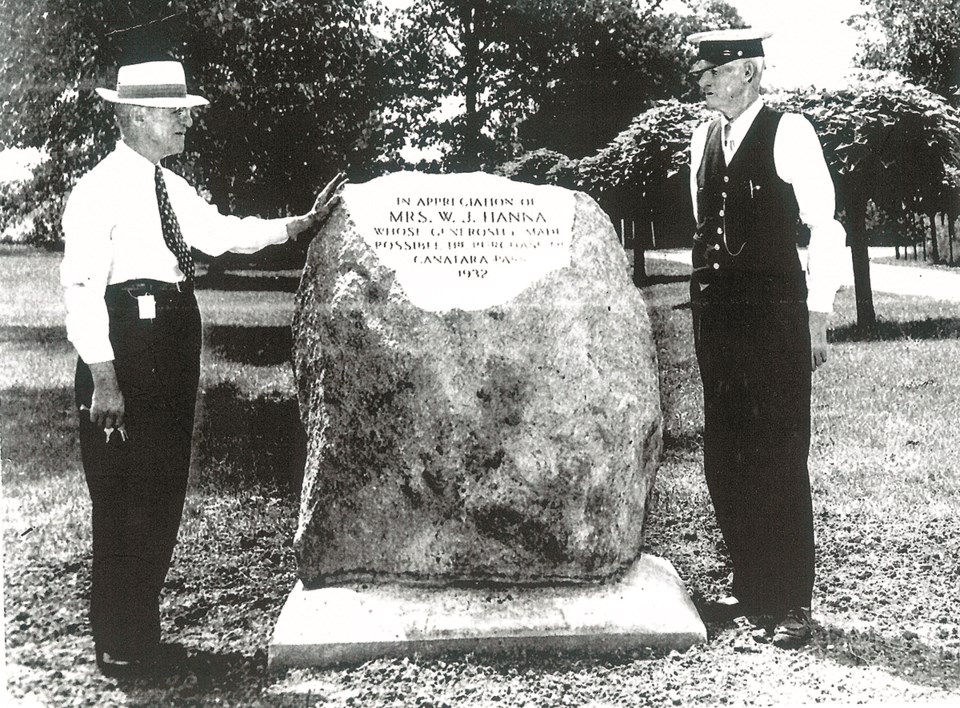Tom St. Amand
It’s two kilometres long, has a maximum limit of 30 km/h, and features seven speed bumps that urge motorists to go slowly.
And if the speed bumps don't work, meandering geese and ducks waddling across the pavement usually do the trick.
Still, Lake Chipican Drive in Canatara Park remains one of the community’s most popular roadways, and has seen a few changes since its construction in 1938.
The road originally began about 30 meters north of today's main entrance off Christina Street, but by 1953 it had moved south to its present location.
And it was called Park Road, at least until members of the Park’s Board wisely renamed it Lake Chipican Drive in 1945. After all, the picturesque road winds around a pond that’s been known as Lake Chipican since at least the 1800s.
In Smith's Canadian Gazetteer, Canada West 1846, writer W. H. Smith noted: “Lake Chipican, a small lake . . . is separated from Lake Huron by a ridge of high land: it is two miles north from Port Sarnia.”
Over the years, the pond has gone by other names. In the 1840s, Americans John Slocum and Henry Seward established a successful fishery on the St. Clair River at Point Edward. According to local researcher Jack Fraser, Seward lived in a house near the northwest corner of Lake Chipican from about 1840 to 1860.
For many years, people referred to the adjacent water body as “Seward's Pond,” and the road that became Woodrowe Road and later Christina Street was originally called Seward Road.
Lake Chipican was also known as “Little Lake,” for obvious reasons. During normal water levels it covers 15 acres to a maximum depth of 10 feet. It’s a dewdrop compared to the world famous and adjacent Lake Huron, which covers more than 14 million acres.
Today, though, most residents know it as Lake Chipican. And though that name has endured for nearly two centuries its origins are a bit of a mystery.
Clues lie in Chipican’s other name: “Lake of the Root” or “Lake of Roots.”
Indigenous people considered the waters sacred because roots of plants growing in and around the lake were used for medicine, and it’s believed Medicine Men visited the special lake to gather these roots.
In the late 1940s, Chippewa elder Philip George, 87, shared a story passed down from his ancestors. He said Lake Chipican was named for a girl known in Ojibwe as Chip-Kan, who would have been born around 1797.
“Chip-Kan” means “root” in English and the translation for Lake Chipican is “Lake of the Root” or “Lake of Roots.”
Chip-Kan was the sister of Eliza Maccoose, who was the wife of Chief Joshua Wawanosh (c1781-1860s)
Philip George said he didn’t know why Chief Wawanosh decided to name the lake after his sister-in-law, or why she took the name “Chip-Kan” (Root).
Whatever the reason, Lake Chipican it is and Lake Chipican it will continue to be.
For more than eight decades, countless residents and tourists have used Lake Chipican Drive to visit Canatara Park.
It’s a slow ride, but one full of history and beauty.
Tom St. Amand is a regular contributor, The Journal’s trivia master, and co-author of the Streets of Sarnia Project.
